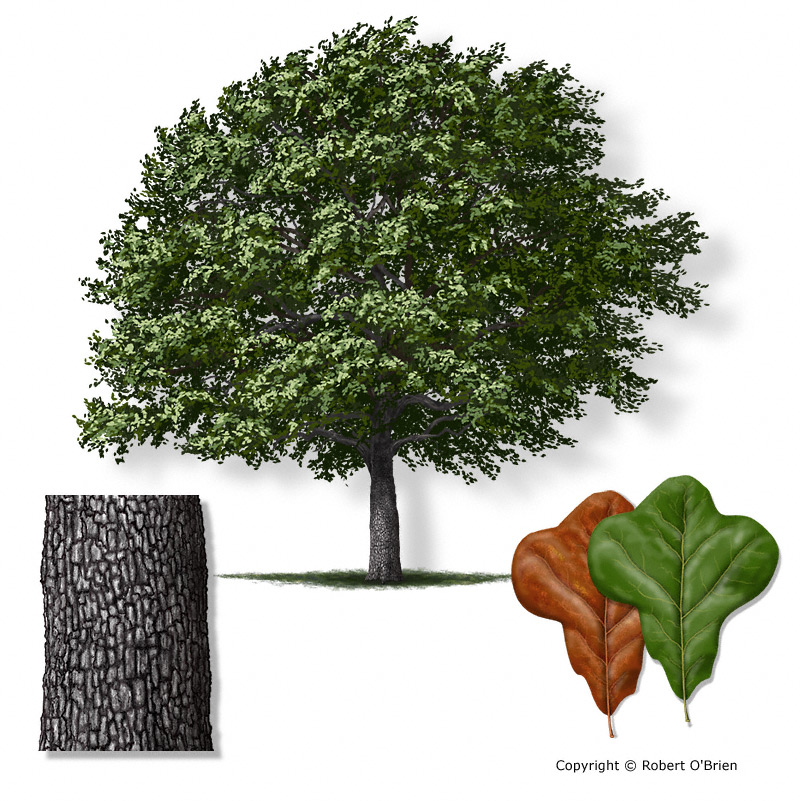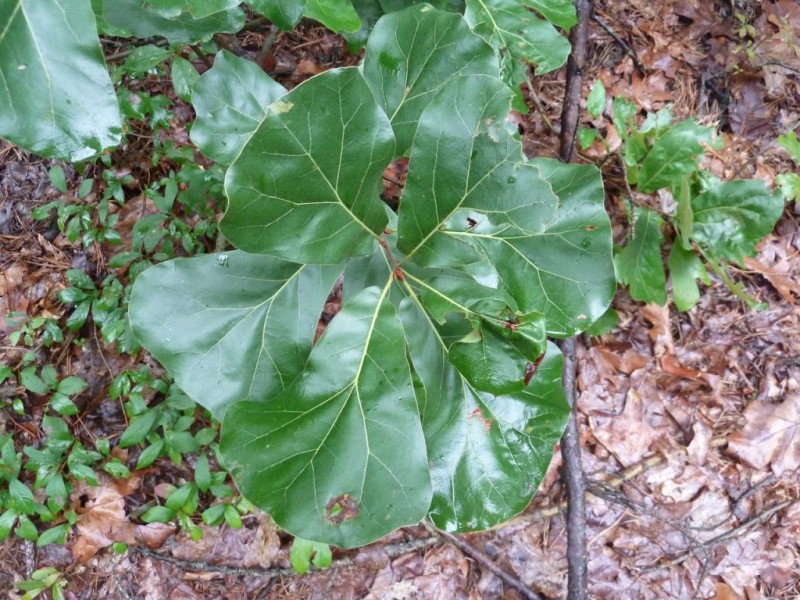Blackjack oak is one of the few species of red oaks that shares the white oak group characteristic of vessels blocked by tyloses. Western populations in Texas and Oklahoma are often recognized as Q. Marilandica var.
The University of Arkansas System Division of Agriculture does not promote, support or recommend plants featured in 'Plant of the Week.' Please consult your local Extension office for plants suitable for your region.
Blackjack Oak
Latin: Quercus marilandica
This summer’s drought has been tough on trees. The drive between Fayetteville and Little Rock is punctuated with whole hillsides of brown and seemingly lifeless trees.
While these trees - mostly oaks, hickories, dogwoods and elms - look bad from a distance, most will survive the rigors of the 2000 drought without much problem. Summers like this help one appreciate the really tough trees such as the blackjack oak.
A kid I knew in my youth was scrappy and always getting into fights. His favorite saying was, 'When you’re ugly you gotta be tough.' Mother Nature has applied this simple truism to the blackjack oak because it is one ugly, but tough tree.
Blackjacks are found throughout most of the eastern woodlands, occupying sites with soil too poor or dry for oaks with more stature and substance to flourish. It was one of the few tree species to venture onto the Great Plains before white settlement, occupying a region from central Texas northeast through Oklahoma known as the cross timber region.
The blackjack is a small, gnarly tree usually under 35 feet tall with a round crown and leathery, three-lobed leaves. It is a member of the red oak tribe and has the characteristic leaf spine at the end of each lobe. The leaves hang on the tree through the winter to be pushed off by new leaves the following spring. It’s trunk is often deeply furrowed and black, giving it a brooding wintertime appearance.
The Rodney Dangerfield of oaks, blackjacks are given but one use - firewood - by most authors who seem overly hung up on the notion that all oaks reach the pinnacle of their glory at the saw mill.
It might be instructive to speculate on the long term effects of this summer’s drought on the survival and health of the forest. As bad as the trees look, most will survive the drought because they have been forced into an early dormancy to conserve water.
Unfortunately, that is not the end of the story. The oaks of our eastern forest are systemically infected with a fungus called Hypoxylon canker - sort of the athlete’s foot of the oak kingdom.
Survey work conducted by Dr. Pat Finn at the UofA following the severe drought of 1980 showed that about 80 percent of the oaks of northwest Arkansas have this systemic infection. This fungus is usually benign and does no apparent harm, but droughts cause it to flare up. Certain trees -- with no discernable pattern -- are killed by the multiplying hyphae of the fungus as it produces its spores on fungal mats under the bark of the tree. These fungal mats push the bark off which accumulates at the base of the tree like a rain of deadly dandruff.
For the health of the forest, Hypoxylon is a beneficial fungus because it thins the stand of trees. In 1980, the disease killed about 12 percent of the oaks in some areas, thus allowing the survivors more opportunity to obtain water.
Unfortunately most of us that build our homes in the woodland have difficulty taking the long view on ecology when the tree in front of our house is the one that dies. About all that can be done to ward off the effects of this problem is to keep the drought at bay by watering before conditions become too severe.
Blackjacks are not in the nursery trade and many who have them on their property treat them with little respect. But, before dismissing this tough tree as a scrub oak and relegating it to the woodpile, reflect on its toughness and adaptability under adverse conditions.
By: Gerald Klingaman, retired
Extension Horticulturist - Ornamentals
Extension News - September 22, 2000
The University of Arkansas Division of Agriculture does not maintain lists of retail outlets where these plants can be purchased. Please check your local nursery or other retail outlets to ask about the availability of these plants for your growing area.
What Does Blackjack Oak Look Like
Blackjack oaks are a small variety of oak tree that can be found growing wild throughout a significant portion of the woodlands of the eastern U.S. These trees are fairly hardy and thrive in soil that is too poor for other trees. Although adaptable to a variety of soil conditions, the blackjack oak is quite susceptible to disease.
Oak Wilt
What Eats Blackjack Oak


Oak wilt is caused by a fungus that is either transmitted by beetles feeding on the tree or from one tree to another through their root systems. The blackjack oak is particularly susceptible to the disease. Oak wilt is almost always fatal in blackjack oaks and they can die in as soon as one month. When oak wilt first strikes, leaves slowly turn yellow, wilted or water logged. These leaves eventually drop. As the disease progresses, fungal mats appear on the bark. But by the time these symptoms are noticed, it is too late to save the tree. The best solution is to uproot the tree and plant a disease-resistant cultivar.
Canker
Canker is caused by a fungus that forms mats under the bark of blackjack oak trees. Tree owners often first notice the bark accumulated at the bottom of the tree as the fungal mats push sections of it out. Canker is often seen as a beneficial blackjack oak tree disease. It affects the excess blackjack tree population allowing surviving trees more access to resources.
Bacterial Wetwood
Blackjack oak trees affected with bacterial wetwood ooze a brown, foul-smelling liquid from cracks or wounds in the wood. When the ooze dries, it leaves behind a light-colored crust on the bark. There is no cure for bacterial wetwood, but trees seldom die from the condition. As the bacteria consume the tree, they raise the pH of its interior, which actually preserves the wood.
Oak Leaf Blister
When oak leaf blister first strikes, owners often notice that their blackjack oak trees' leaves that are slightly yellowed and blistered. As the disease progresses, the bottom of the leaves turn gray and the leaves eventually drop. Oak leaf blister is not a serious disease. Control the spread of the infection by pruning affected foliage.
Shoestring Root Rot
Shoestring root rot is easily identified by the clusters of tan or yellow mushrooms that form at the foot of infected trees. If you lift up the bark of an infected blackjack oak you will see the black shoestring fungus and the underlying wood will look white and rotten. There is no cure for shoestring root rot. Infected plants should be uprooted and the soil sterilized before another blackjack oak is planted.